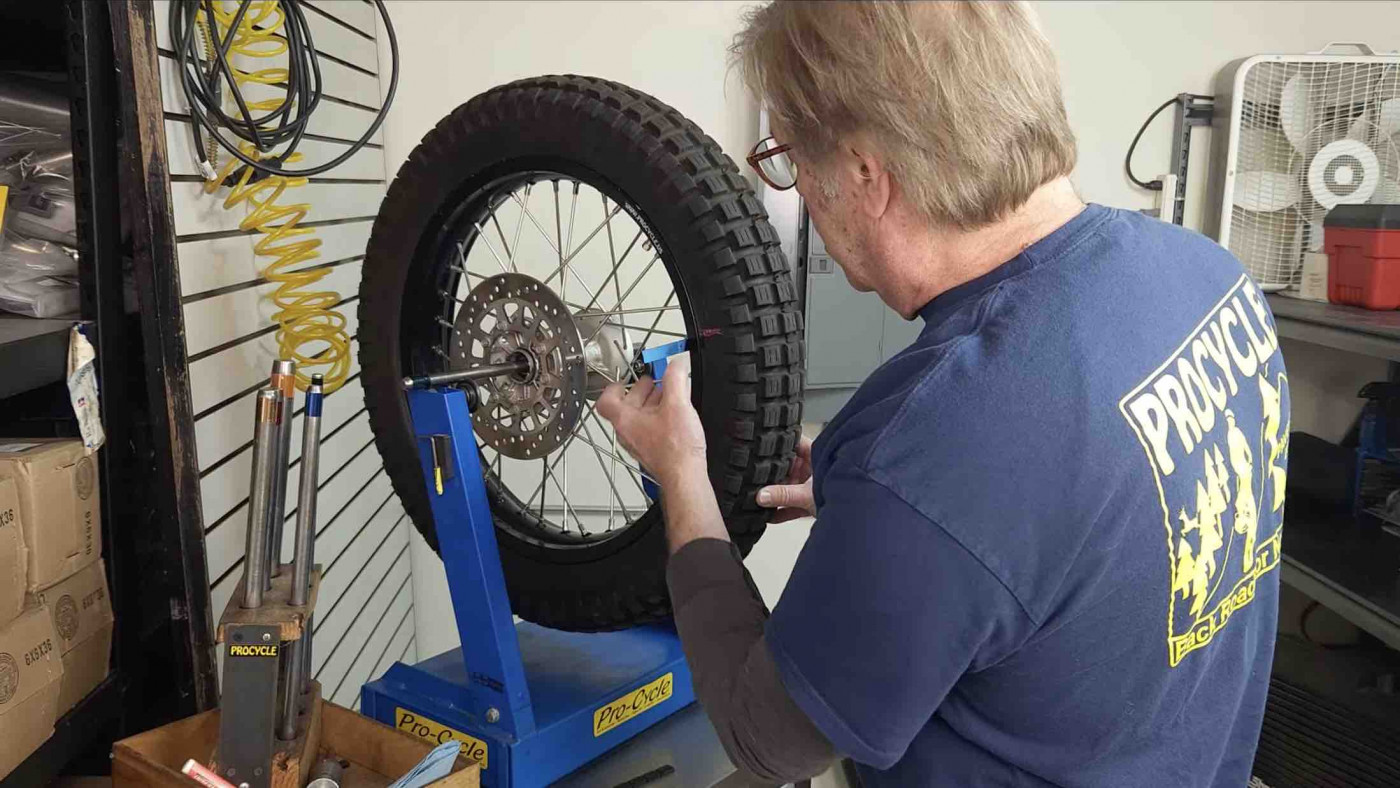Whenever you mount new tires (front or rear), it is very important that you properly balance the new setup. Because of parts like valve stems and because of manufacturing tolerances, your wheels & tires will not have their weight perfectly distributed. Taking the time to make sure your wheels & tires are correctly balanced will greatly improve tire performance, increase vehicle stability, and promote even tire wear, extending their life.
We recommend static balancing as a maintenance task that you can do easily in your own garage. Start by supporting the wheel & tire on a balancing stand or across two parallel surfaces using the bike's axle.
Then, remove all existing wheel weights. With the wheel & tire supported at the axle, allow it to "settle" so that the heaviest section rotates to the bottom, 6 o’clock position. At this point, make a mark at the top of the tire (12 o’clock position) with a paint stick or marker. The mark indicates the lightest section, where you will be adding the wheel weights to counterbalance the heaviest section on the opposite side.
Next, before adding any weights, rotate the tire 90° and allow the wheel & tire to "roll back" to the "settled" position. This will tell you how much weight to add. The faster the wheel rotates back to the settled position, the more unbalanced it is, and the more weight you will need.
We recommend using stick-on type wheel weights. Cut a test amount of weights and lightly attach them to the corner of the shoulder on the rim where you marked the tire. Rotate the wheel & tire back to the 90° position. If the wheel & tire remain still, then it is balanced. Add or remove weights as necessary, as it may take a few tries to get the correct amount. Once you confirm the correct amount, remove all of the backing from the stick-on weights, and firmly adhere to a clean surface on the rim's shoulder.
If the shoulder of the rim is not wide enough for stick-on type wheel weights (such as most front 21” rims), you can use lead string that is commonly used for fishing. Cut the correct amount and wind it around the spokes tightly.
If you need to add a significant amount of weight (more than 4 sections), you can split the piece of weights in half and attach each half to one side of the rim. Similarly with lead string, you can cut it into 2 (or 3) even sections and wrap around 2 (or 3) spokes.

